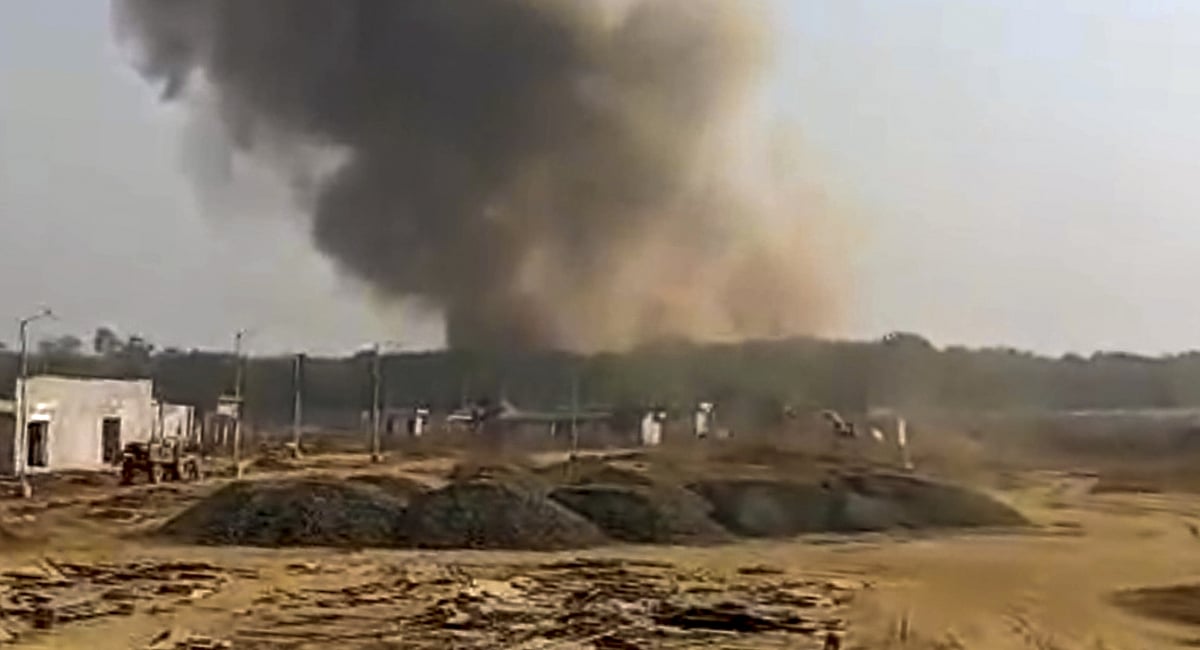 |
|
A devastating explosion rocked an ordnance factory in Bhandara, Maharashtra, India, on Friday morning, resulting in a tragic loss of life and leaving a community in mourning. The incident, which occurred around 10:30 am at the factory located in Jawahar Nagar, immediately triggered a large-scale rescue operation involving the National Disaster Response Force (NDRF). The initial reports, while conflicting, painted a grim picture of the aftermath. Union Minister Nitin Gadkari confirmed eight fatalities and seven injuries, whereas the district collector, Sanjay Kolte, initially reported four confirmed deaths and five rescued injured individuals with several still trapped under the debris. This discrepancy highlights the chaotic and rapidly evolving nature of the situation immediately following the blast. The differing numbers underscore the challenges faced in accurately assessing casualties in the immediate aftermath of such a catastrophic event, especially given the structural damage and potential for further collapse.
The explosion, reportedly occurring in the "LTP section" of the factory, caused a significant fire and resulted in a partial or complete building collapse. This added a further layer of complexity to the rescue effort, requiring specialized equipment and highly trained personnel to navigate the dangerous environment. The NDRF, renowned for its expertise in disaster relief, was swiftly deployed to the scene, employing advanced techniques to safely extract survivors from the rubble and recover the bodies of the deceased. The precise cause of the explosion remains under investigation, though preliminary inquiries suggest a possible internal failure or accidental detonation of explosive materials within the facility. A thorough and comprehensive investigation is crucial not only to determine the immediate cause but also to identify any systemic issues or preventative measures that could prevent future occurrences.
The incident elicited immediate responses from high-ranking government officials, underscoring the severity of the situation and the widespread concern it generated. Defence Minister Rajnath Singh expressed his deep sorrow and offered condolences to the bereaved families. Similarly, Maharashtra Chief Minister Devendra Fadnavis, although his initial estimate of the number of trapped workers proved slightly inflated, emphasized the gravity of the situation. These statements, conveyed through official channels and social media, reflect the government's commitment to supporting the victims and investigating the incident fully. Beyond the immediate emergency response, significant attention must now turn towards long-term support for the families affected, as well as a careful assessment of safety protocols and industry standards to help prevent future tragedies.
The identification of four deceased workers – Chandrashekhar Goswami (59), Manoj Meshram (55), Ajay Nagdeve (51), and Ankit Barai (21) – provided a tangible human dimension to the tragedy. These names, along with the names of the injured – N P Wanjari (55), Sanjay Raut (51), Rajesh Badwaik (33), Sunil Kumar Yadav (24), and Jaydeep Banerjee (42) – offer a glimpse into the lives affected by this devastating event. The loss of these individuals represents a significant blow to their families and the wider community, underscoring the human cost of industrial accidents. Beyond the immediate grief and shock, the coming days and weeks will require substantial community support, including counseling and assistance to help those affected cope with their loss and navigate the complex aftermath.
The incident at the Bhandara ordnance factory serves as a stark reminder of the inherent risks associated with handling explosives and the importance of stringent safety regulations and ongoing vigilance in such industries. The investigation into the cause of the explosion will be crucial in determining whether negligence played a role or if the incident was the result of unforeseen circumstances. Regardless of the ultimate findings, the tragedy highlights the urgent need for ongoing review and improvement of safety protocols in ordnance factories and similar high-risk industrial environments. The prioritization of worker safety, regular safety audits, and comprehensive training programs are all crucial components in mitigating risks and preventing future occurrences. The legacy of this event must serve as a catalyst for change, ensuring that similar tragedies are avoided in the future.
Source: Eight dead after blast at ordnance factory in Maharashtra's Bhandara, says Union Minister Gadkari
